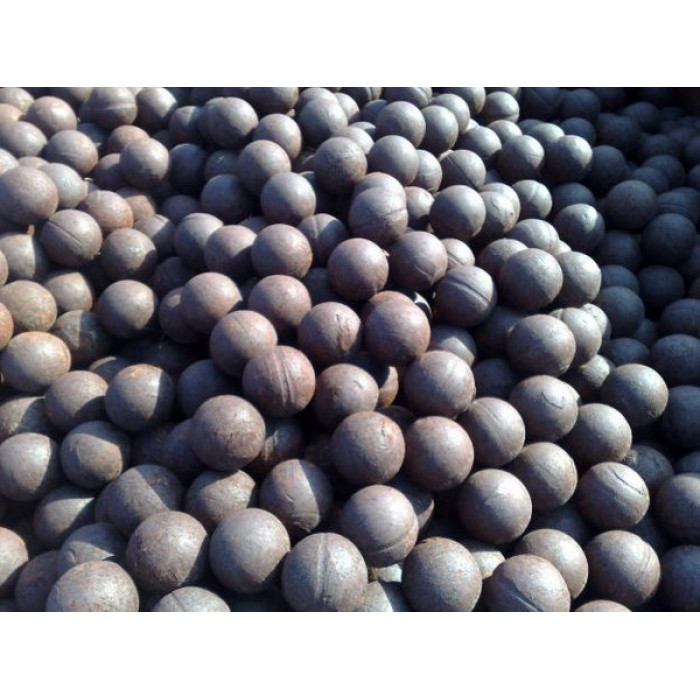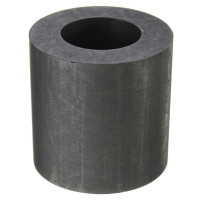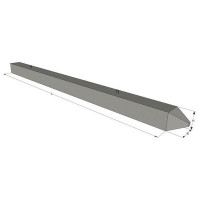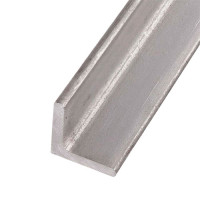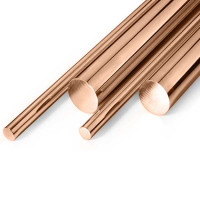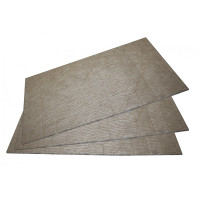Grinding balls with a diameter of 70 mm for ball mills can be manufactured both according to international and national standards (for example, DSTU 8538, GOST 7524), and according to the specifications of manufacturers and consumers. The main classifier characteristics are as follows:
Product material: cast iron, steel, hard alloy, ceramics
Production technology: centrifugal casting, hot rolling, forging, stamping, sintering
Hardness: normal, increased, high
The most common are grinding balls made of carbon and low-alloy steels, used primarily for grinding raw materials. Such grinding media for ball mills are produced by hot rolling, forging and stamping. An increase in the hardness of the balls is ensured by microalloying of steel and heat treatment.
The technology for producing cast iron balls is more complex (centrifugal casting); they are used primarily for grinding cement and non-ferrous metal ores. Increasing the wear resistance of such products is ensured by alloying cast iron with chromium, vanadium, molybdenum and nickel.
The main quality parameters of steel grinding balls produced according to the DSTU 8538 standard are: nominal diameter, nominal diameter, maximum diameter deviations and hardness. The nominal diameter is the diameter of the ball, rounded to the nearest standard value. Nominal diameter is the diameter relative to which maximum deviations are determined. Maximum deviations are the difference between the maximum and nominal diameters.
Application of grinding balls
A drum mill is a device where crushing of materials is carried out in a cylindrical or cylindrical-conical drum, half of which is filled with grinding media, while the drum rotates around its horizontal axis. Typically, the feedstock is loaded on one side of the unit, and the crushed product is unloaded on the other. When the drum rotates, the grinding bodies grind the material in free motion, i.e. reduce the size of its particles by mechanical action.
The grinding bodies in mills are cast iron and steel balls with a diameter of 15-150 mm, carbide balls with a diameter of 8-20 mm, cast iron or steel cylinders ("cilpebs" type), round steel rods with a diameter of up to 130 mm and a length corresponding to the length of the mill drum, and also silicon or ore pebbles up to 200 mm in size, large pieces of crushed raw material. Taking this into account, ball, rod, pebble, ore-pebble and autogenous mills are distinguished. To increase the resistance of the inner walls of the drums, they are lined (lined) with plates made of cast steel or rubber, plates made of hard alloys and other materials. Drum mills are used in metallurgy and mining - for the enrichment of mined raw materials, for the preparation of pulverized coal fuel, etc.
According to the chosen technology, drum mills are divided into units for dry and wet grinding. To ensure the required sizes of crushed raw materials, the equipment is combined with classifiers (air separators, hydrocyclones, etc.), which separate the material obtained in the mill into small and large. The small product goes into further processing, while the large product is returned to the mill for additional grinding.
A ball mill is a drum grinding unit that uses balls made of hard materials (steel, cast iron, hard alloys, ceramics, etc.). The most common are ball mills, where, when the drum is rotated and the balls rub against the inner walls, they rise until the angle of ascent becomes greater than the angle of repose. Then the grinding bodies are again at the bottom. The grinding of the material is its abrasion between the inner surface of the drum and the ball, as well as between the balls themselves. The impacts of the balls as they fall lead to crushing of the material.
A kind of ball mill is a planetary mill, in which several vertical drums (usually from 3 to 6) are placed on a disk and rotate around their axes, and all together around the axis of the disk. The opposite direction of rotation of the drums and the disk ensures the rolling and rotation of the grinding media, due to which intensive grinding occurs.
Classification and properties of grinding balls
Steel grinding balls for ball mills can be produced both according to international, national standards (for example, DSTU 8538, GOST 7524), and according to the specifications of manufacturers and consumers. The main classifier characteristics are as follows:
Production of steel balls
The most common technology for producing grinding balls from steel is hot rolling. The method of helical rolling is used, when the original round billet, after being heated in a furnace to a predetermined temperature, is fed into a ball-rolling mill, where it is reduced in rolls with helical calibers rotating in one direction. A 2-roll or 3-roll rolling scheme can be used. When leaving the rolling stand, the metal balls are cooled with water or a water-air mixture to increase the strength.properties, with further self-release in bunkers.
An alternative method for the production of grinding balls from steel is stamping, however, it is less common due to the lower productivity of the lines (2-3 times) and higher metal consumption (10-20% more).
Requirements for balls according to GOST
In accordance with GOST 7524, grinding balls are divided into four groups:
General purpose parts with standard strength.
With increased strength. Used for crushing large irregularly shaped mining blocks.
Special purpose with high strength. They are used only for grinding cement, refractories, non-ferrous metal ores.
With ultra-high strength. Are applied to a grinding exclusively of ferrous metals.
According to GOST, the diameter of the balls is from 1.5 to 12 centimeters. Small deviations are allowed (but not more than 5 millimeters within one batch). The volume of such parts is from 1.5 to 1000 cubic centimeters (the larger the diameter, the larger the volume).
The density of the material should be from 7.7 to 8 grams per cubic centimeter (the ideal figure is 7.85 g per cubic cm). Taking into account the density of the material, the weight of the grinding ball is from 17 grams to 8 kilograms.
Low- and high-alloy steel, as well as cast iron, are used for production. The maximum carbon content is 0.7%. It is recommended to use steel with a high content of chromium, nickel - this material is highly resistant to corrosion.
Quality control and transportation
GOST 7524 also controls a number of related issues. Carrying out control measurements, transportation, storage, acceptance of materials. According to GOST, the geometric characteristics of spherical products are determined by the manufacturer using measurements made with a caliper.
For measurements, two zones are taken, which are located on opposite sides of each other. It is on the basis of measurements of these sections that the geometric characteristics (diameter + length of individual sectors) are determined. To determine defects, measurements and external inspection are sufficient.
By default, you need to use rail transport for transportation. However, by prior arrangement, the contractor may use road transport. For road transportation, the balls must be packaged in special boxes. The boxes themselves must be firmly attached to the truck so that the balls do not crumble during transportation.
Acceptance of goods is carried out in batches; The maximum size of one batch is 150 tons. Each batch must contain balls of the same size and group. The batch must have proper documentation.
The accompanying document must contain the following information: name, trademark, batch number, results of control measurements, group.
You can store the balls in a dry place without access to water and chemicals. The shelf life in most cases is unlimited.
From us you can buy grinding balls with a diameter of 70 mm at the best price in Ukraine. A wide range of products allows us to quickly and efficiently fulfill any order, helping to complete any construction work on time.
No questions about this product, be the first and ask your question.

